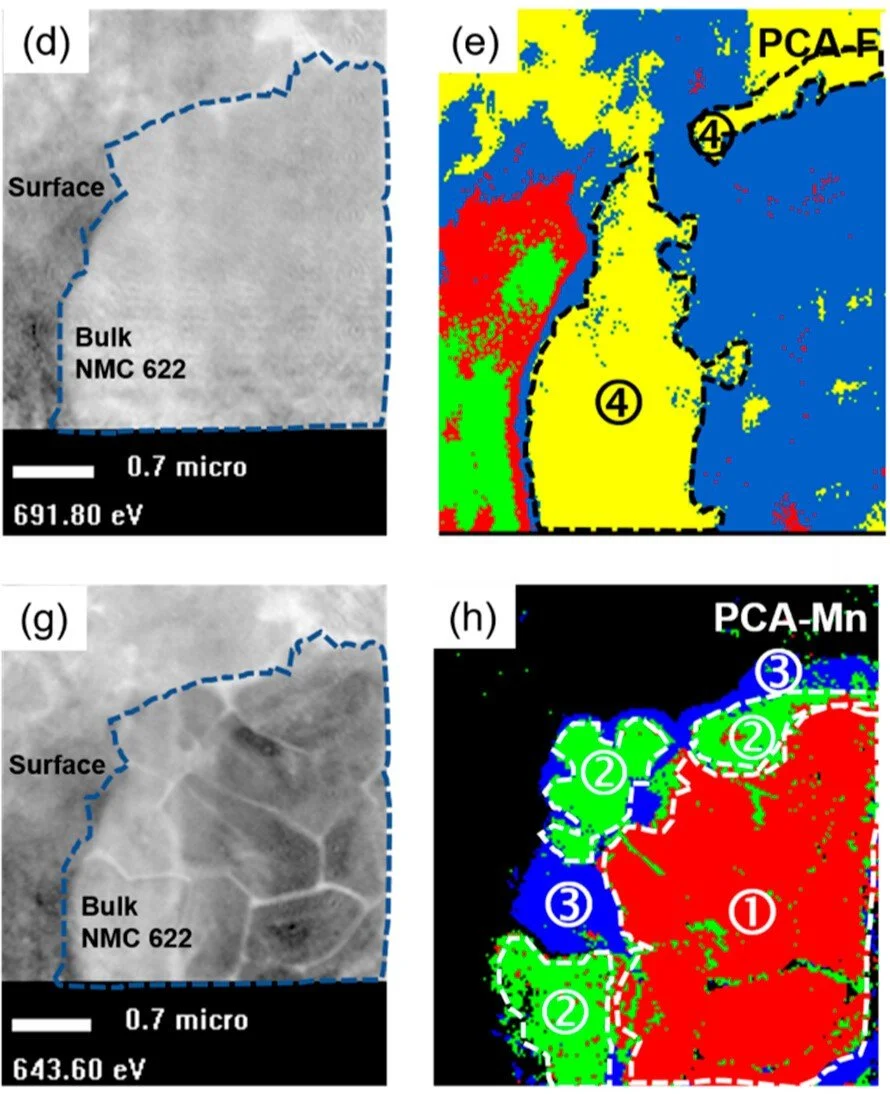Battery research world first
First in-situ X-ray absorption study of liquid battery cells
A greener future depends on better batteries: to move away from fossil fuels, we need rechargeable batteries with higher power and energy density to store intermittent energy from solar and wind. Moreover, these batteries could completely replace fossil fuels in vehicles.
Mohammad Banis at a Canadian Light Source beamline where he studies batteries. Photo by Lana Haight
Metal-air batteries seem like the answer, with the highest theoretical ability to pack energy into a small space (a property called energy density) of all current battery types.
"If we can achieve the theoretical energy density of metal air batteries and use them in vehicles, we can have much more driving range and make them more competitive with internal combustion engines that are currently used in cars,” says Mohammad Banis, a Western University researcher whose recent worklooked at the charge and discharge cycles of a sodium-air battery in action.
Banis, who works in Andy Xueliang Sun’s clean energy research group at Western, spent a full year stationed at the Canadian Light Source to develop new tools for battery research. Observing the real time behaviour of material during charge cycles of a metal air battery presents a puzzle: the soft X-ray technique used typically requires a vacuum chamber, which makes it particularly difficult to study a liquid system.
“When we started the experiment, there was a bet going that I wouldn’t be able to make the in situ cell work,” says Banis. “Luckily, I won the bet!”
Banis and Sun credit a strong collaborative spirit between researchers at Western (including Dr. T.K. Sham) and the CLS, particularly with beamline scientists including Dr. Tom Regier, Dr. Yongfeng Hu and the industry group for their success.
Andy Xueliang Sun at Western University. Photo Western University
“Without all of them I don't think we would have gotten do this research. But if we bring people from different places together we can achieve something remarkable,” says Banis.
Their success represents the first-ever reported in situ liquid cell metal-air battery testing performed with Soft X-ray Spectroscopy, published in Energy and Environmental Science. To pull it off, Banis modified a CLS-designed liquid cell to accommodate battery experiments.
“The ability to do in situ studies is particularly important for understanding sodium-air batteries because they are very sensitive to the air, and the reaction products are affected by the environment,” explains Sun.
The team was able to gain new insight into why sodium-air batteries lose the ability to hold charge over time. Researchers already knew that several chemical products are produced by the battery’s discharge cycle, and that this was likely part of the problem, but pinning down the details required this real-time reaction work.
This project shows definitively that there is a reaction between the liquid electrolyte in the battery and the discharge products, which over time reduces the capacity of the battery.
“That reaction is not good for the lifetime of the battery. In the future we need to work on how to avoid these reactions in the battery: do we need to change the electrolyte, or something else?” says Sun. Without question, his team will keep pushing battery research forwards.
This work first appeared on the Canadian Light Source news
Banis, Mohammad Norouzi, Qian Sun, Tom Regier, Teak Boyko, Jigang Zhou, Yun-Mui Yiu, Ruying Li, Yongfeng Hu, Tsun-Kong Sham, and Xueliang Sun. "Revealing the charge/discharge mechanism of Na-O2 cells by in situ soft X-ray absorption spectroscopy." Energy & Environmental Science (2018). DOI: 10.1039/C8EE00721G







